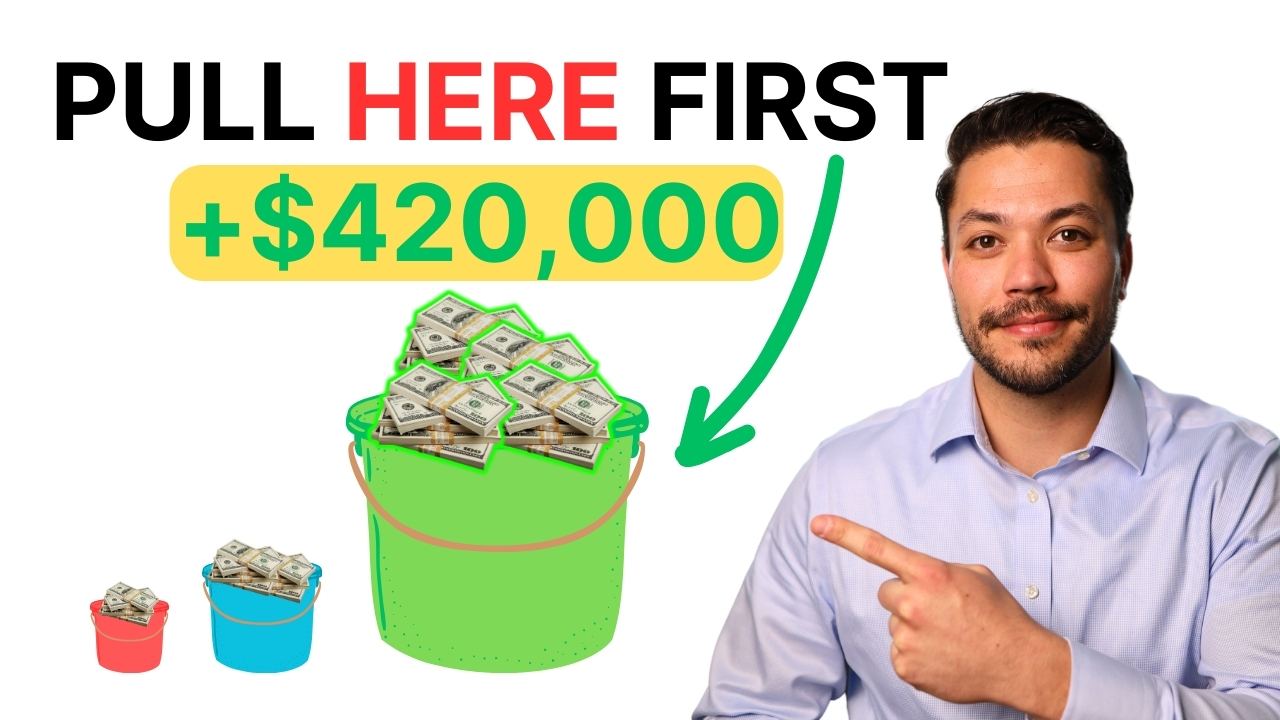Are you wondering where to withdraw money first in your retirement income strategy? It’s a critical decision that can significantly impact your financial future. In this comprehensive guide, we’ll break down a proven framework to help you make informed choices, illustrated by a real-life case study.
Resources:
Understanding Retirement Account Buckets
Before delving into the strategic withdrawal framework, it’s crucial to grasp the three primary retirement account buckets:
- Taxable Bucket: This includes brokerage accounts, individual, joint, or trust investment accounts. You’ll pay taxes annually on dividends and potential investment gains.
- Tax-Deferred Bucket: Accounts like IRAs or 401(k)s fall into this category. While investments grow or pay dividends, no taxes are incurred. However, withdrawals in retirement are often taxed at ordinary income rates.
- Tax-Free Bucket: Accounts like Roth IRAs or Roth 401(k)s offer tax-free withdrawals for both federal and state purposes. They also provide flexibility by not mandating distributions in your seventies.
The Framework: 5 Steps to a Smart Retirement Income Strategy
Step 1: Categorize Your Accounts
Organize your accounts into the three buckets mentioned earlier. Assign a percentage value to each bucket based on your entire portfolio.
Step 2: Determine Your Monthly Income Needs
Calculate the amount you require each month for a comfortable retirement lifestyle, factoring in any existing income sources like Social Security or rental income.
Step 3: Create a Withdrawal Bar
Visualize your income needs as a bar and fill it with existing income sources first, such as Social Security or rental income. Then, strategically add withdrawals from specific buckets.
Step 4: Apply Taxes to Each Income Source
Estimate the tax impact on each income source. If, for instance, you plan to withdraw from your tax-deferred bucket, calculate the additional amount needed to cover taxes.
Step 5: Revision and Optimization
Review your initial plan, considering tax efficiency. Ensure you’re utilizing tax-efficient strategies, such as Roth conversions, to minimize taxes and maximize after-tax income.
Real-Life Case Study: Mike and Judy
Meet Mike and Judy (Names changed), a couple seeking to optimize their retirement income strategy. With a $2.5 million portfolio distributed across taxable, tax-deferred, and tax-free buckets, they faced the challenge of deciding where to withdraw funds first.
Following the conventional wisdom of tapping into taxable accounts first, their initial tax projection showed a low tax bill in the early years. However, as they relied heavily on tax-deferred accounts in later years, their tax burden skyrocketed, particularly with mandatory distributions in their seventies.
Optimized Plan: A $420,000 Tax Savings
In the revised plan, we strategically utilized Roth conversions to fill their 12% ordinary income bracket, taking advantage of lower tax rates. This optimized approach resulted in a projected tax savings of approximately $420,000.
Conclusion: Empowering Your Retirement Journey
Making informed decisions about retirement withdrawals can substantially impact your financial well-being. By understanding the strategic framework and learning from real-life examples like Mike and Judy, you can navigate your retirement with confidence, ensuring maximum after-tax income over your lifetime.
Remember, seeking professional advice tailored to your unique situation is crucial for implementing these strategies effectively. Plan wisely, and enjoy a financially secure retirement!
The Retirement Recap
Join the 964+ other retirees and get weekly articles and videos to help you retire with confidence.
Subscribers also gain access to our private monthly client memo.
This does not constitute an investment recommendation. Investing involves risk. Past performance is no guarantee of future results. Consult your financial advisor for what is appropriate for you. Disclosures: https://onedegreeadvisors.com/solutions/#disclosures
